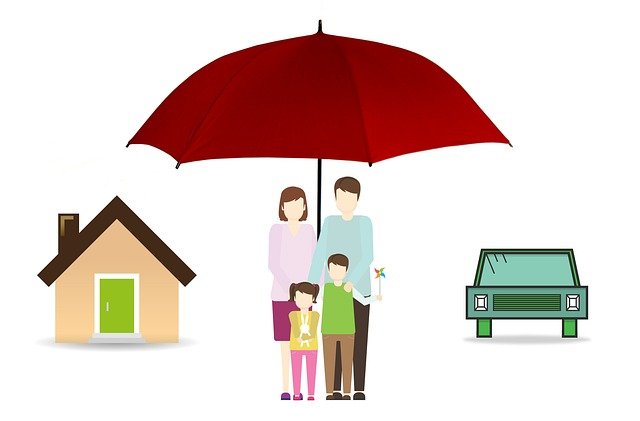Understanding Sheltered Housing Options for Single Mothers
Single mothers face unique housing challenges that require specialized solutions and support systems. Sheltered housing represents a critical safety net, providing temporary accommodation while families work toward long-term stability. These programs offer more than just a roof overhead, incorporating wraparound services that address the complex needs of single-parent households. Understanding available options, eligibility requirements, and support services can make the difference between crisis and stability for vulnerable families.

Overview of Housing Challenges and Opportunities for Single Mothers
Single mothers encounter distinct obstacles in securing stable housing, often stemming from limited income, lack of credit history, or previous housing instability. Economic factors play a significant role, as single-parent households typically have lower median incomes compared to two-parent families. Discrimination in rental markets can further complicate housing searches, with some landlords showing preference for traditional family structures.
Despite these challenges, opportunities exist through various housing assistance programs, nonprofit organizations, and community initiatives. Many programs specifically target single mothers, recognizing their unique circumstances and providing tailored support services alongside housing assistance.
Types of Housing Assistance Programs Available to Single-Parent Families
Federal housing assistance programs form the backbone of support for single mothers. The Housing Choice Voucher Program, commonly known as Section 8, provides rental assistance that allows families to choose their housing in the private market. Public housing offers government-owned units at reduced rents, while the Moderate Rehabilitation Program provides assistance for specific rehabilitated units.
State and local programs complement federal assistance through emergency housing vouchers, transitional housing programs, and rapid rehousing initiatives. Many communities operate specialized programs for families experiencing domestic violence, homelessness, or other crisis situations. These programs often provide case management services alongside housing assistance.
Key Factors to Consider When Choosing Safe and Affordable Housing
Safety considerations extend beyond basic security measures to include neighborhood crime rates, proximity to emergency services, and building maintenance standards. Quality schools, healthcare facilities, and public transportation access significantly impact long-term family stability and opportunities for advancement.
Affordability calculations should include not just rent but utilities, transportation costs, and childcare expenses. The general rule suggests housing costs should not exceed 30% of gross income, though many single mothers find this benchmark challenging to meet without assistance.
Accessibility features may be necessary for families with disabled members, while proximity to employment opportunities and childcare providers affects daily logistics and long-term economic stability.
Community Resources and Support Networks That Assist Single Mothers
Local nonprofit organizations often provide comprehensive support beyond housing assistance. Faith-based organizations, community action agencies, and women’s resource centers offer services ranging from emergency financial assistance to job training programs.
Government agencies at various levels coordinate housing assistance with other support services. Social services departments, workforce development agencies, and health departments often work together to address the interconnected needs of single-parent families.
Peer support networks, including single mother support groups and community organizations, provide emotional support and practical advice from others who understand similar challenges.
Cost Considerations and Program Comparison
Housing assistance costs vary significantly based on location, program type, and family size. Emergency shelter programs typically cost communities between $3,000-$8,000 per family per month, while transitional housing programs range from $1,500-$4,000 monthly. Permanent supportive housing costs average $12,000-$25,000 annually per family.
| Program Type | Average Monthly Cost | Duration | Services Included |
|---|---|---|---|
| Emergency Shelter | $3,000-$8,000 | 30-90 days | Basic needs, case management |
| Transitional Housing | $1,500-$4,000 | 6-24 months | Housing, support services, job training |
| Rapid Rehousing | $800-$2,500 | 3-24 months | Rental assistance, case management |
| Permanent Supportive Housing | $1,000-$2,100 | Long-term | Housing, ongoing support services |
Prices, rates, or cost estimates mentioned in this article are based on the latest available information but may change over time. Independent research is advised before making financial decisions.
Emerging Housing Models That Promote Stability and Empowerment for Single Mothers
Innovative housing models are emerging to better serve single mothers and their children. Co-housing communities designed specifically for single parents provide individual units within supportive community environments, sharing resources like childcare and transportation.
Tiny house villages and micro-unit developments offer affordable homeownership opportunities while building community connections. Some programs combine housing with entrepreneurship training, helping single mothers develop businesses from their homes.
Shared equity homeownership programs allow families to purchase homes with reduced down payments and shared appreciation, making homeownership more accessible while building long-term wealth.
Master-leasing programs enable nonprofit organizations to lease apartments from private landlords and sublease to program participants, providing stability while families work toward independent housing.
Sheltered housing continues evolving to meet the complex needs of single mothers, recognizing that stable housing serves as the foundation for family success. These programs increasingly emphasize not just immediate shelter but long-term stability, economic empowerment, and community connection. Success depends on comprehensive approaches that address housing alongside education, employment, childcare, and other support services essential for single-parent family stability.




